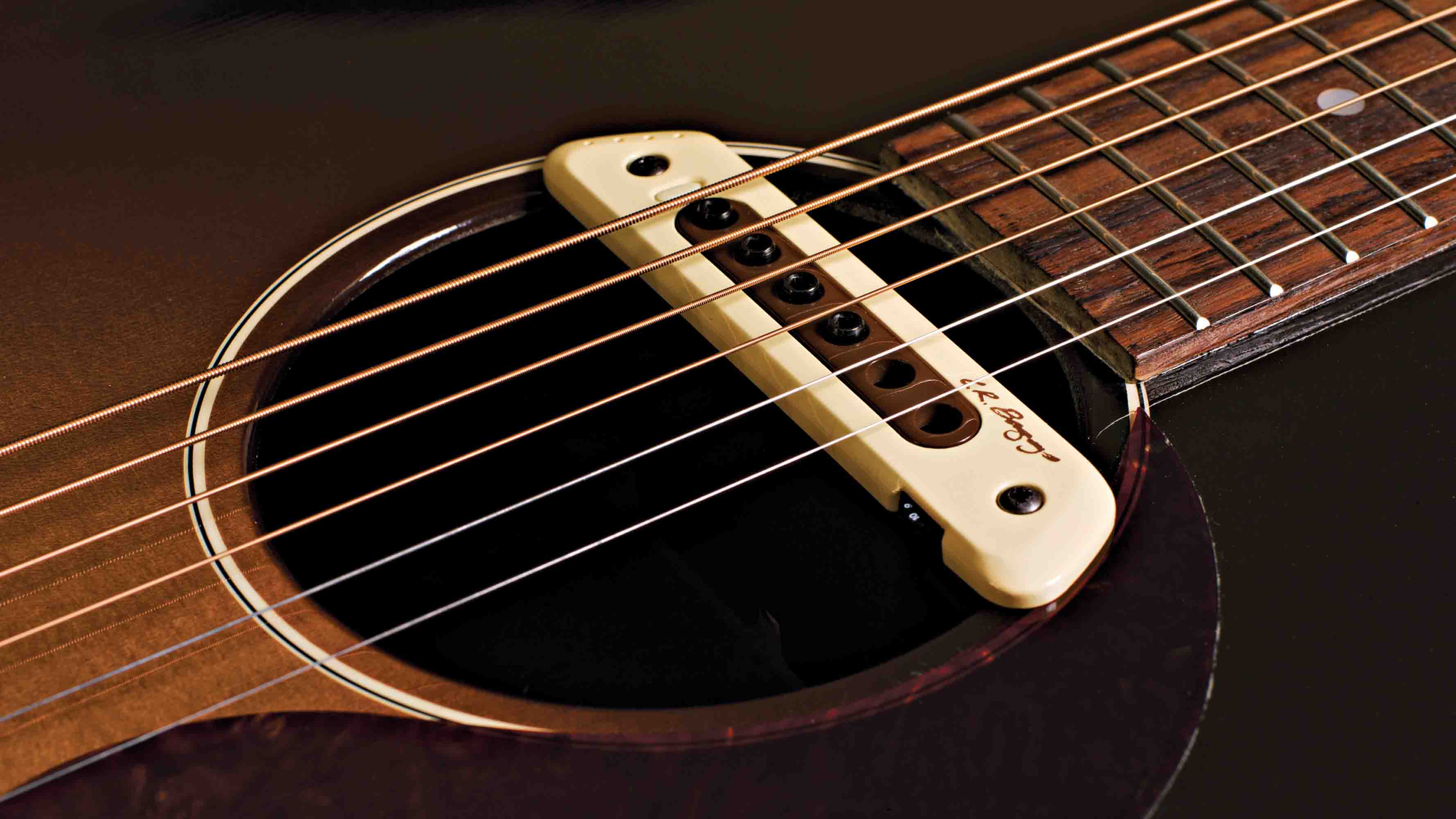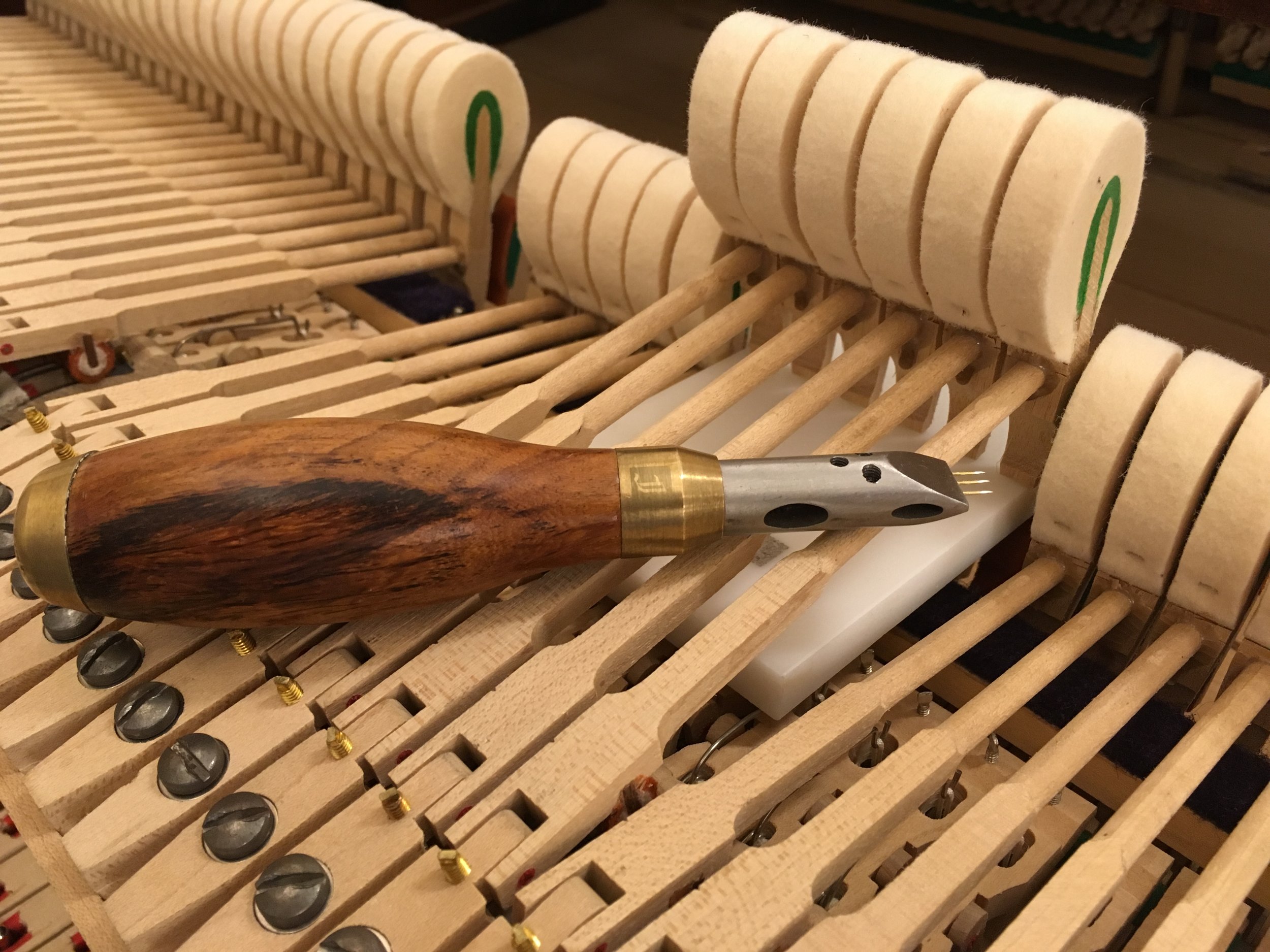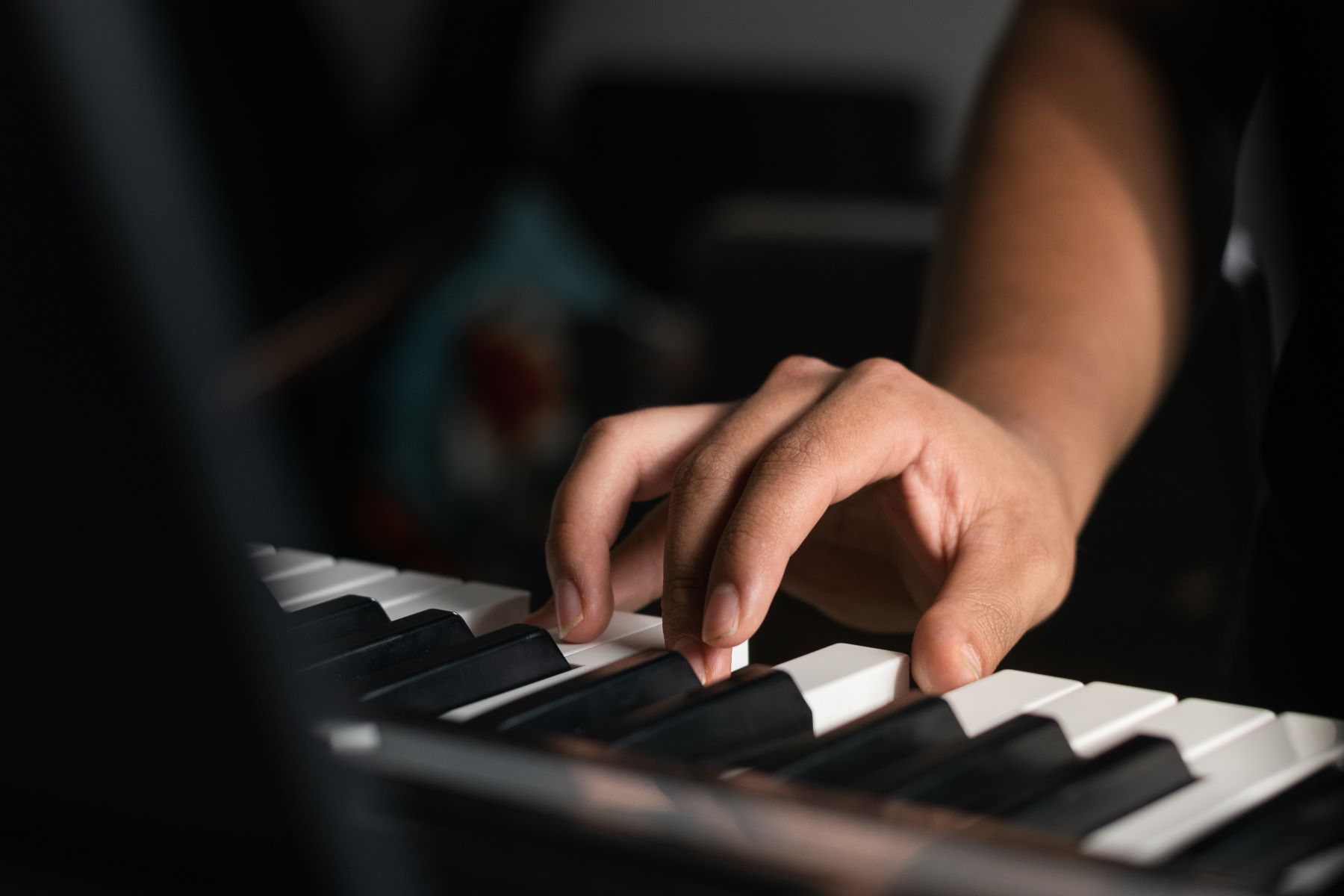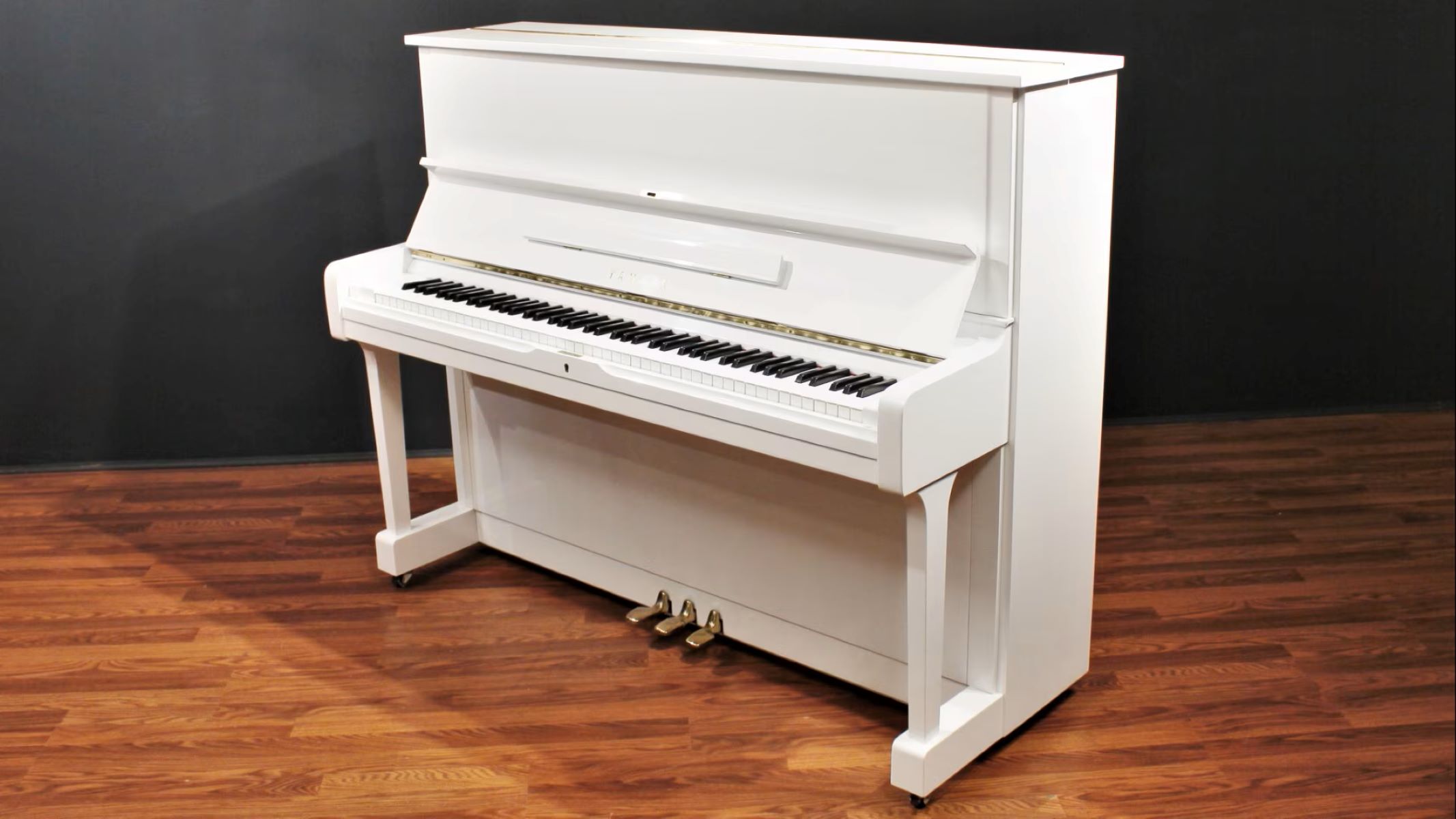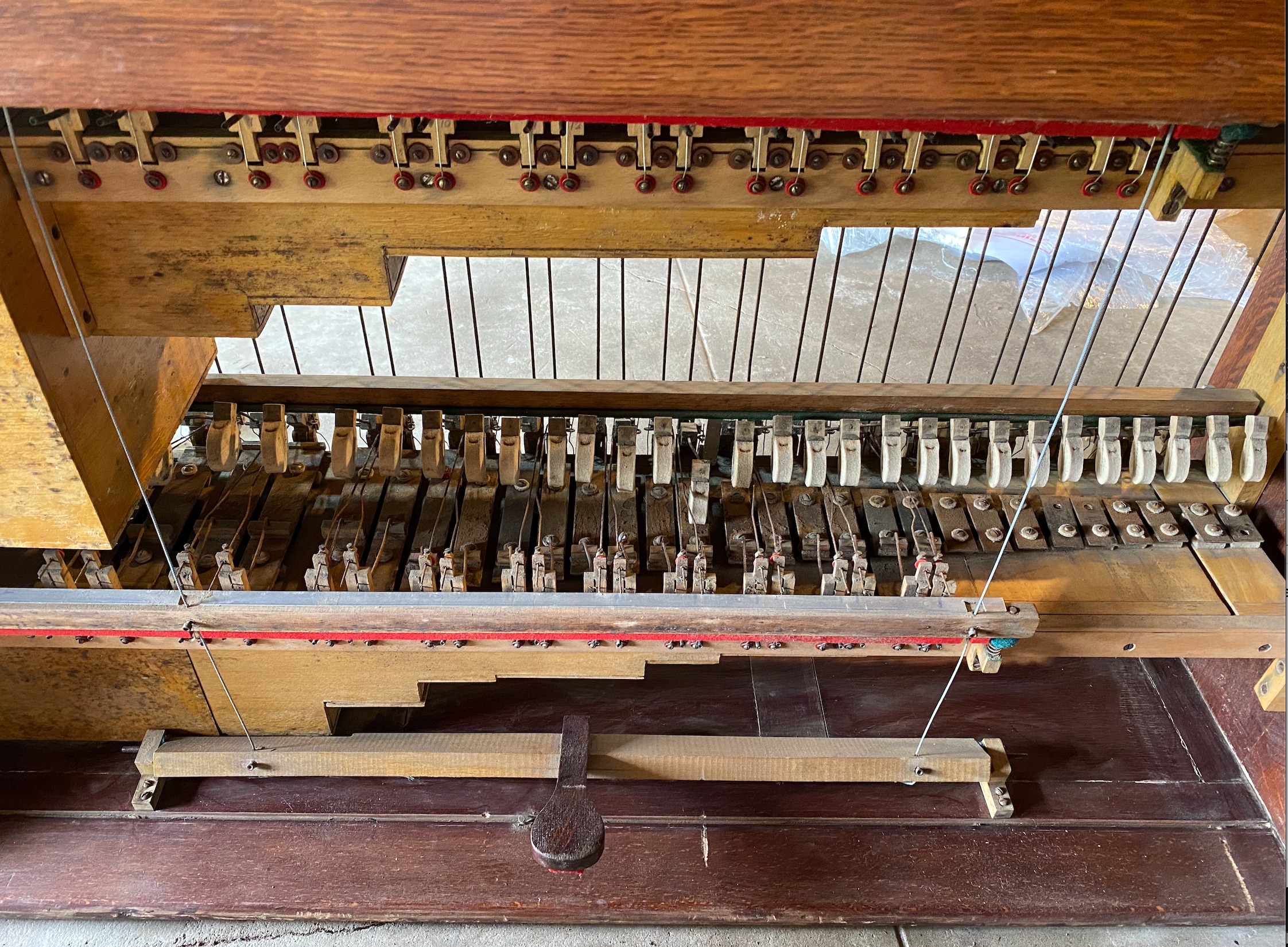Home>Production & Technology>Acoustic>What Is Acoustic Piano


Acoustic
What Is Acoustic Piano
Published: March 13, 2024
Discover the beauty of acoustic pianos and their unique sound. Learn about the history, construction, and benefits of acoustic pianos.
(Many of the links in this article redirect to a specific reviewed product. Your purchase of these products through affiliate links helps to generate commission for AudioLover.com, at no extra cost. Learn more)
Table of Contents
Introduction
The acoustic piano, a timeless and revered musical instrument, holds a special place in the hearts of musicians and music enthusiasts worldwide. Its rich, resonant tones and expressive capabilities have made it a staple in classical, jazz, and contemporary music genres. The acoustic piano, also known as a traditional or upright piano, is distinguished by its use of hammers and strings to produce sound. Unlike its digital counterpart, the acoustic piano's sound is created through the physical interaction of its components, resulting in a unique and authentic musical experience.
The acoustic piano's enduring appeal can be attributed to its unparalleled ability to convey emotion and nuance through its dynamic range and tonal complexity. From delicate, ethereal melodies to thunderous, commanding chords, the acoustic piano offers a diverse sonic palette that resonates with listeners on a profound level. Its tactile nature, responsive keys, and organic sound production create an intimate connection between the pianist and the instrument, fostering a deeply personal and immersive musical journey.
Steeped in history and tradition, the acoustic piano embodies a legacy of craftsmanship and artistry that spans centuries. Its timeless allure transcends cultural boundaries and continues to captivate audiences across the globe. As a centerpiece of musical compositions and performances, the acoustic piano serves as a symbol of creativity, passion, and artistic expression.
In the following sections, we will delve into the captivating history of the acoustic piano, explore its intricate components, delve into its diverse types, unravel the fascinating process of sound production, and uncover the essential practices for its maintenance and care. Through this exploration, we will gain a deeper appreciation for the acoustic piano's enduring significance and the profound impact it has had on the world of music.
History of Acoustic Piano
The history of the acoustic piano is a captivating journey that spans centuries, marked by innovation, craftsmanship, and a profound impact on musical expression. The origins of the piano can be traced back to the early 18th century, with Bartolomeo Cristofori, an Italian instrument maker, credited as the inventor of the first true piano. Prior to the piano's emergence, harpsichords and clavichords were the primary keyboard instruments, but they lacked the dynamic range and expressive capabilities that would later define the piano.
Cristofori's groundbreaking creation, initially known as the "gravicembalo col piano e forte" (harpsichord with soft and loud), introduced a revolutionary mechanism that allowed for varying levels of touch sensitivity and volume control. This pivotal innovation laid the foundation for the modern piano as we know it today.
Throughout the 18th and 19th centuries, the piano underwent significant evolution and refinement, leading to the development of different styles and forms. The piano's popularity soared during the Romantic era, with composers such as Ludwig van Beethoven, Wolfgang Amadeus Mozart, and Frédéric Chopin harnessing its expressive potential to compose timeless masterpieces.
The craftsmanship of piano manufacturing also flourished during this period, with renowned piano makers such as Steinway & Sons and Bösendorfer setting the standard for excellence in design and construction. The intricate artistry and meticulous attention to detail exhibited by these craftsmen elevated the piano to a symbol of sophistication and cultural refinement.
The 20th century witnessed further advancements in piano technology, including the introduction of the upright piano, which offered a more compact and affordable alternative to grand pianos. Additionally, the development of player pianos and the incorporation of innovative materials and construction techniques continued to shape the evolution of the instrument.
Today, the acoustic piano remains an enduring icon of musical tradition and artistry, cherished by performers, educators, and enthusiasts worldwide. Its timeless elegance, expressive capabilities, and rich heritage continue to inspire new generations of musicians, ensuring that the legacy of the acoustic piano will endure for years to come.
Components of Acoustic Piano
The acoustic piano is a marvel of engineering and craftsmanship, comprising a myriad of intricate components that work in harmony to produce its iconic sound. Understanding the fundamental elements of the piano provides insight into its inner workings and the remarkable synergy between mechanical precision and musical artistry.
-
Keyboard: The keyboard serves as the interface between the pianist and the instrument, consisting of 88 keys that span seven octaves. Each key is meticulously weighted and balanced to provide a responsive touch and nuanced control over dynamics and expression.
-
Action: The action mechanism of the piano encompasses the complex system of levers, hammers, and escapements that translate the pianist's keystrokes into the striking of strings. This intricate assembly is a testament to precision engineering and is responsible for the piano's dynamic range and responsiveness.
-
Strings: The heart of the piano's sound production lies in its strings, which are carefully tensioned and meticulously tuned to specific pitches. The interaction between the vibrating strings and the action mechanism results in the creation of rich, resonant tones that define the piano's sonic character.
-
Soundboard: The soundboard, typically made of spruce, amplifies the vibrations of the strings, projecting the sound into the surrounding space. Its unique properties contribute to the piano's tonal complexity and sustain, enhancing the instrument's expressive capabilities.
-
Frame and Structure: The robust frame and structural components of the piano provide stability and support for the string tension, ensuring the instrument's integrity and longevity. The craftsmanship and materials used in constructing the frame are crucial in maintaining the piano's resilience and tonal integrity over time.
-
Pedals: The pedals of the piano, including the sustain pedal, soft pedal, and una corda pedal, offer additional means of shaping and manipulating the instrument's sound. These pedals enable the pianist to evoke a diverse range of tonal colors and textures, adding depth and nuance to their performances.
-
Cabinet and Finish: Beyond its functional components, the piano's cabinet and finish contribute to its aesthetic appeal and overall presence. The design and craftsmanship of the cabinet reflect the instrument's heritage and serve as a testament to the artistry of piano making.
The intricate interplay of these components underscores the acoustic piano's status as a masterpiece of engineering and musical expression. Each element plays a vital role in shaping the instrument's sonic character and responsiveness, culminating in a timeless instrument that continues to captivate and inspire musicians and audiences alike.
Types of Acoustic Piano
The world of acoustic pianos encompasses a diverse array of instruments, each with its unique characteristics, tonal qualities, and design features. Understanding the different types of acoustic pianos provides insight into the nuanced nuances of sound and performance that cater to the preferences and requirements of pianists and music enthusiasts.
-
Grand Piano: Renowned for its majestic presence and unparalleled sound projection, the grand piano stands as a pinnacle of acoustic excellence. Available in various sizes, ranging from the concert grand to the baby grand, these instruments offer a wide dynamic range, rich tonal depth, and exceptional responsiveness. The grand piano's horizontal string arrangement and open lid design contribute to its resonant and expressive sound, making it a preferred choice for concert halls, recording studios, and discerning pianists seeking uncompromising performance.
-
Upright Piano: Compact yet robust, the upright piano, also known as a vertical piano, embodies versatility and space-efficient design. Its vertical string arrangement and compact footprint make it an ideal choice for home practice, music schools, and intimate performances. Despite its smaller size, the upright piano delivers a rich and nuanced sound, offering a balance of tonal clarity and expressive capabilities. With modern advancements in design and construction, upright pianos continue to evolve, offering enhanced sound quality and aesthetic appeal.
-
Console Piano: Positioned between the upright and grand pianos in terms of size and performance, the console piano strikes a harmonious balance of tonal richness and space-saving design. Its compact stature and vertical string arrangement make it well-suited for residential settings, practice rooms, and smaller performance venues. The console piano's responsive action and resonant sound projection make it a popular choice for pianists seeking a versatile and expressive instrument that fits seamlessly into various environments.
-
Studio Piano: Designed with a focus on professional performance and studio recording, the studio piano embodies precision and tonal clarity. Its compact size and robust construction make it an ideal companion for recording studios, rehearsal spaces, and venues with limited space. The studio piano's responsive action and balanced tonal characteristics cater to the demands of recording and live performances, offering a reliable and expressive instrument for discerning musicians and recording engineers.
-
Digital Hybrid Piano: Blending the timeless appeal of acoustic pianos with modern technology, the digital hybrid piano represents a fusion of tradition and innovation. These instruments feature acoustic piano actions combined with digital sound processing, offering the tactile feel of a traditional piano with the versatility of digital sound capabilities. Digital hybrid pianos cater to musicians seeking a seamless integration of acoustic authenticity and digital convenience, making them well-suited for diverse musical applications and technological integration.
The diverse range of acoustic piano types reflects the rich heritage and evolving craftsmanship of piano making, offering a spectrum of options to suit the preferences, performance requirements, and spatial considerations of pianists and music enthusiasts. Whether in a concert hall, a cozy living room, or a professional recording studio, the acoustic piano's diverse types continue to inspire and elevate musical experiences across the globe.
Sound Production in Acoustic Piano
The sound production in an acoustic piano is a fascinating interplay of mechanical precision and musical resonance, culminating in the creation of rich, expressive tones that define the instrument's sonic character. Understanding the intricate process through which the piano produces sound provides insight into the instrument's captivating allure and enduring legacy.
At the heart of the acoustic piano's sound production are the strings, meticulously tensioned and precisely tuned to specific pitches. When a pianist depresses a key, a complex chain of events is set in motion. The key activates the action mechanism, comprising levers and hammers, which swiftly ascend and strike the strings with controlled force. This interaction sets the strings into motion, causing them to vibrate and emit distinct frequencies that form the basis of the piano's tonal palette.
The strings' vibrations are then transmitted to the soundboard, a vital component that amplifies and projects the sound into the surrounding space. Crafted from resonant spruce, the soundboard serves as a conduit for the strings' vibrations, enhancing their tonal complexity and sustain. The unique properties of the soundboard contribute to the piano's rich, enveloping sound, imbuing each note with warmth and depth.
Furthermore, the piano's cabinet and structural components play a crucial role in sound production. The robust frame and structural integrity of the piano provide a stable foundation for the string tension, ensuring that the instrument resonates harmoniously and consistently. The design and craftsmanship of the cabinet also contribute to the piano's acoustic properties, influencing the instrument's overall tonal projection and resonance.
The pedals of the piano offer additional avenues for shaping and manipulating the instrument's sound. The sustain pedal, for instance, sustains the vibration of the strings, allowing for prolonged resonance and blending of harmonies. The soft pedal reduces the volume and modifies the tonal character, while the una corda pedal shifts the hammers' striking position, resulting in a softer, more intimate sound.
The intricate interplay of these components underscores the acoustic piano's status as a masterpiece of engineering and musical expression. Each element contributes to the instrument's dynamic range, tonal complexity, and expressive capabilities, resulting in a timeless instrument that continues to captivate and inspire musicians and audiences alike.
Maintenance and Care of Acoustic Piano
Maintaining an acoustic piano is essential for preserving its tonal integrity, playability, and overall longevity. By adhering to a regular maintenance regimen and implementing proper care practices, pianists and piano owners can ensure that their instrument remains in optimal condition, delivering consistent performance and enduring value.
Regular Tuning:
The tuning of an acoustic piano is a critical aspect of maintenance, as the instrument's strings are susceptible to fluctuations in tension due to environmental factors such as temperature and humidity. It is recommended to have the piano tuned at least twice a year by a qualified piano technician to ensure that it remains in tune with standard pitch. Additionally, newly acquired pianos or those that have been relocated may require more frequent tuning during the initial settling period.
Climate Control:
Maintaining a stable and moderate environment is crucial for the well-being of an acoustic piano. Extreme fluctuations in temperature and humidity can adversely affect the instrument's components, leading to tuning instability, warping of the soundboard, and potential damage to the wooden elements. It is advisable to place the piano in a room with consistent temperature and humidity levels, away from direct sunlight, drafts, and sources of moisture.
Regular Cleaning:
Dust and debris can accumulate on the piano's keys, action mechanism, and soundboard, impacting its performance and aesthetics. Regular cleaning with a soft, lint-free cloth and gentle piano-specific cleaners can help remove dirt and maintain the instrument's pristine appearance. Care should be taken to avoid using excessive moisture or harsh chemicals, as they can damage the piano's finish and delicate components.
Action Regulation and Voicing:
Periodic regulation of the piano's action mechanism, which involves adjustments to the keys and hammers, ensures consistent touch and responsiveness. Additionally, voicing, the process of shaping and refining the piano's hammers, can enhance the instrument's tonal characteristics, resulting in a more nuanced and expressive sound. These procedures are best performed by a skilled piano technician to maintain the piano's optimal playability and tonal quality.
Professional Inspection and Maintenance:
Engaging the services of a qualified piano technician for comprehensive inspections and maintenance is essential for addressing potential issues and ensuring the piano's continued performance. From addressing mechanical adjustments to identifying and resolving structural concerns, a professional technician can provide invaluable expertise in preserving the instrument's integrity and functionality.
By incorporating these maintenance practices into a regular care routine, piano owners can safeguard their acoustic piano's condition and uphold its musical excellence for generations to come. The commitment to attentive maintenance not only preserves the instrument's intrinsic value but also fosters a deep appreciation for the artistry and craftsmanship embodied by the acoustic piano.
Conclusion
In conclusion, the acoustic piano stands as a timeless testament to the artistry, craftsmanship, and enduring legacy of musical expression. From its humble origins in the workshops of Bartolomeo Cristofori to its evolution into a symbol of sophistication and cultural refinement, the acoustic piano has left an indelible mark on the world of music. Its rich history, diverse types, and intricate components underscore the instrument's profound impact on musicians and audiences alike.
The acoustic piano's ability to convey emotion and nuance through its dynamic range and tonal complexity transcends cultural boundaries, captivating listeners with its expressive capabilities. Whether in the grandeur of a concert hall, the intimacy of a living room, or the precision of a recording studio, the acoustic piano continues to inspire and elevate musical experiences across the globe.
Furthermore, the meticulous care and maintenance required to uphold the acoustic piano's integrity reflect a deep reverence for its enduring value. From regular tuning and climate control to professional inspections and maintenance, these practices ensure that the instrument remains a steadfast companion for generations to come.
As we reflect on the acoustic piano's journey through history, from its pivotal role in classical compositions to its versatility in contemporary genres, we recognize its unwavering presence as a cornerstone of musical expression. The acoustic piano's timeless elegance, expressive capabilities, and rich heritage continue to inspire new generations of musicians, ensuring that its legacy will endure for years to come.
In essence, the acoustic piano transcends its role as a musical instrument; it embodies a profound connection between artistry, craftsmanship, and human emotion. Its enduring significance serves as a testament to the enduring power of music to unite, inspire, and elevate the human spirit. As we celebrate the acoustic piano's legacy, we embrace its timeless allure and the boundless creativity it continues to foster in the hearts and minds of musicians and music enthusiasts worldwide.


